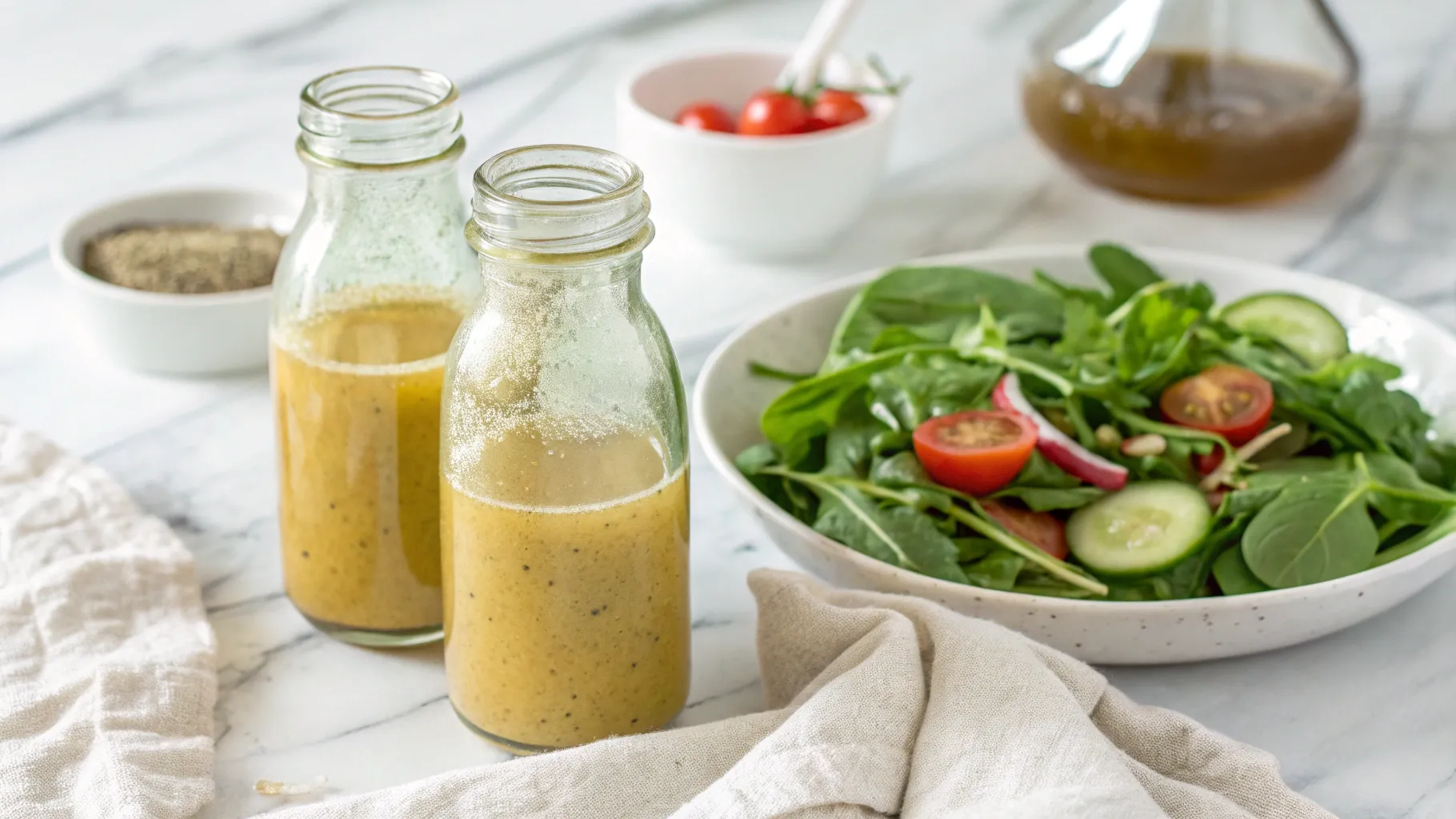When it comes to whipping up a quick and flavorful dressing, basic vinaigrette is truly a kitchen essential. Whether you’re a beginner or a seasoned home cook, mastering a simple basic vinaigrette opens up endless possibilities for enhancing your salads, roasted veggies, and even grains. Luckily, it’s much easier than you might think, and today, we’ll show you exactly how to do it.
What is a Basic Vinaigrette?
At its core, a basic vinaigrette is a simple blend of oil, acid (like vinegar or lemon juice), and seasonings. Historically, this classic mixture has been a staple in cuisines around the world, especially in French cooking.
The best part? Making a vinaigrette at home is easy, no professional chef skills required! Plus, a homemade vinaigrette is far healthier than most store-bought versions. By crafting it yourself, you control exactly what goes in, no unwanted preservatives, additives, or excess sugar.
And when paired with dishes like a fresh Greek Salad, a homemade vinaigrette brings out the best in every bite, tying all the flavors together beautifully.
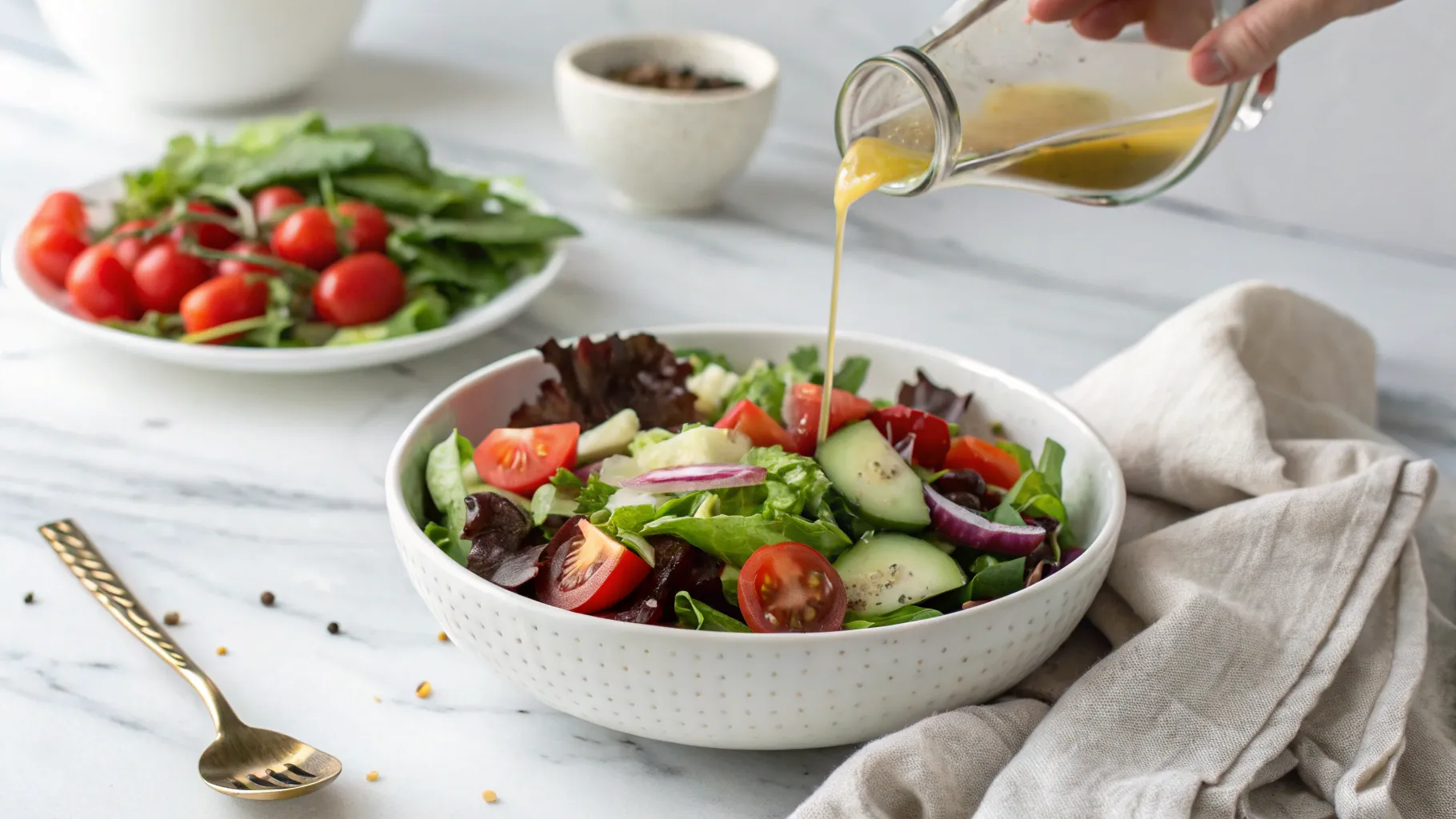
The Perfect Basic Vinaigrette Ratio
One of the first things you’ll hear when learning about basic vinaigrette is the magical ratio:
- 3 parts oil
- 1 part acid
This classic 3:1 ratio strikes the perfect balance between richness and tang. But remember, every palate is different! Don’t be afraid to adjust the proportions to match your personal taste.
If you’re looking to improve your measuring skills, be sure to check out our Cooking Measurements Explained guide, it’ll help you master ingredient ratios with confidence.
Essential Ingredients for a Basic Vinaigrette
For a successful vinaigrette, you’ll only need a handful of key ingredients:
- Oil: Extra-virgin olive oil is a classic choice, but avocado oil and grapeseed oil are fantastic too.
- Acid: Instead of wine-based vinegars, opt for apple cider vinegar, lemon juice, or balsamic vinegar.
- Emulsifiers: Dijon mustard is a popular natural emulsifier that keeps your dressing creamy and blended.
- Seasonings: A pinch of sea salt, black pepper, and minced garlic can transform your vinaigrette.
- Sweeteners: To balance the flavors, consider maple syrup or agave nectar as healthy, natural options.
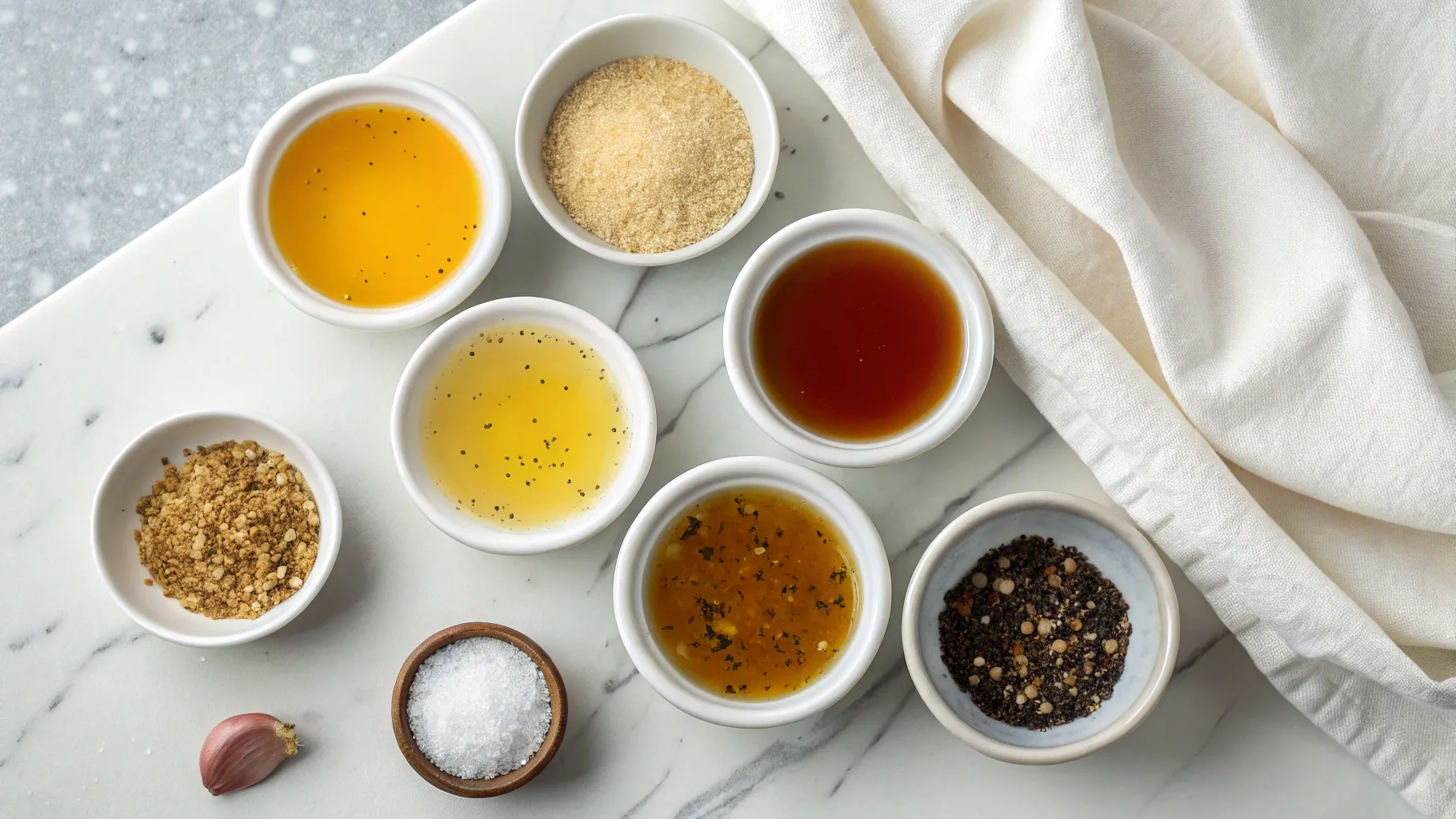
Step-by-Step: How to Make a Basic Vinaigrette
Now that you know what goes in it, let’s talk technique!
Here’s how to quickly whip up a flawless basic vinaigrette:
- Step 1: Add acid (e.g., lemon juice) and seasonings into a bowl.
- Step 2: Whisk in your emulsifier like Dijon mustard.
- Step 3: Slowly drizzle in your oil while whisking continuously.
- Step 4: Taste and adjust seasoning, adding a bit more salt, sweetener, or acid if needed.
- Step 5: Store in a jar and shake well before each use!
💡 Pro tip: Using a blender or jar with a tight lid ensures perfect emulsification.
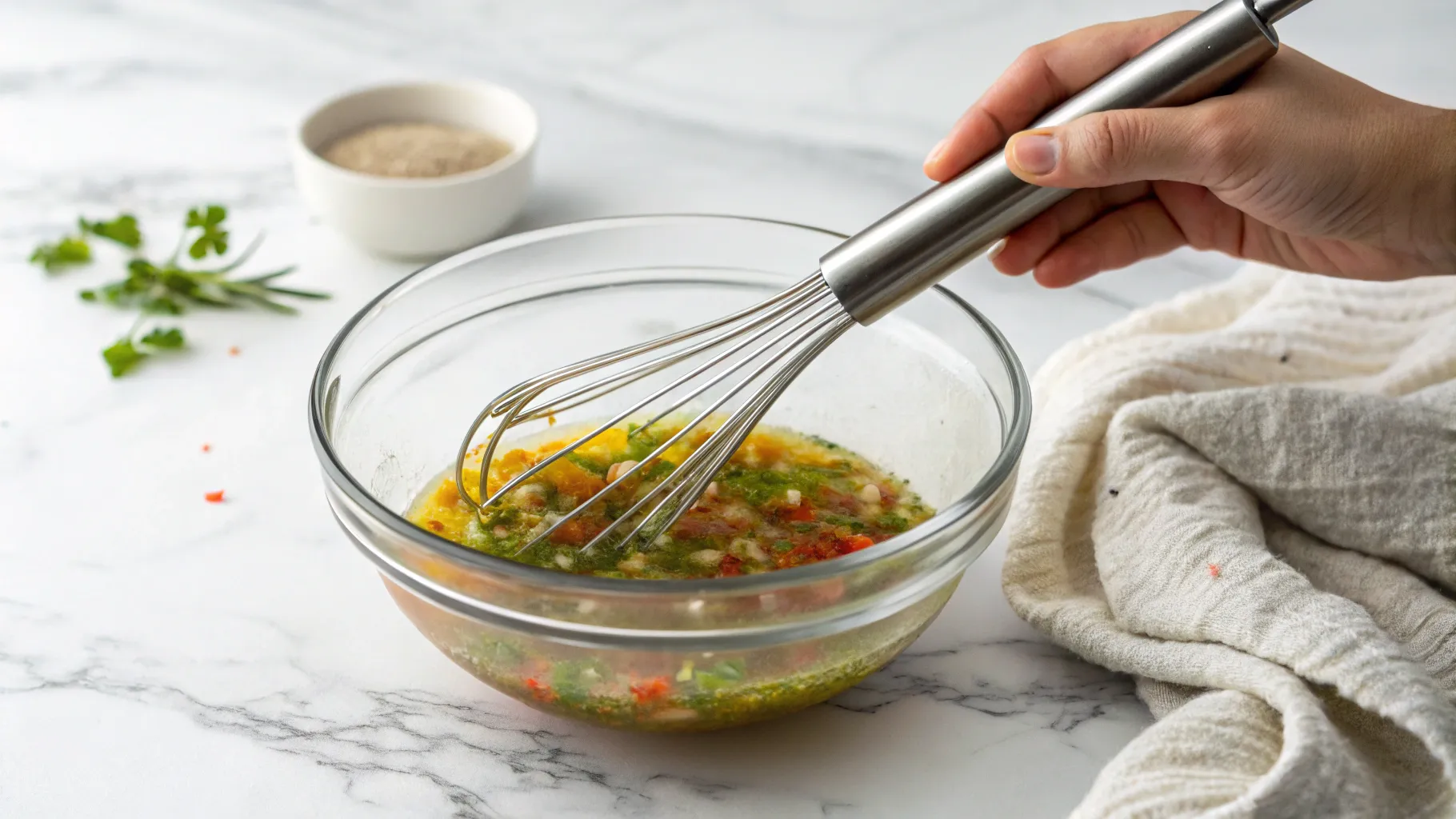
Common Mistakes When Making Basic Vinaigrette
Even though making basic vinaigrette seems simple, small mistakes can throw off your flavor. Watch out for:
- Using low-quality oil: Always choose fresh, high-quality oil for the best taste.
- Adding oil too quickly: It can prevent emulsification, so add it slowly.
- Overpowering with flavors: Balance is key; don’t let any one ingredient dominate.
By avoiding these pitfalls, you’ll enjoy perfect vinaigrettes every time!
Storing Your Homemade Basic Vinaigrette
Proper storage is crucial for maintaining flavor and freshness.
- Keep vinaigrette in an airtight container.
- Store in the refrigerator for up to one week.
- Always shake before use, since separation is natural.
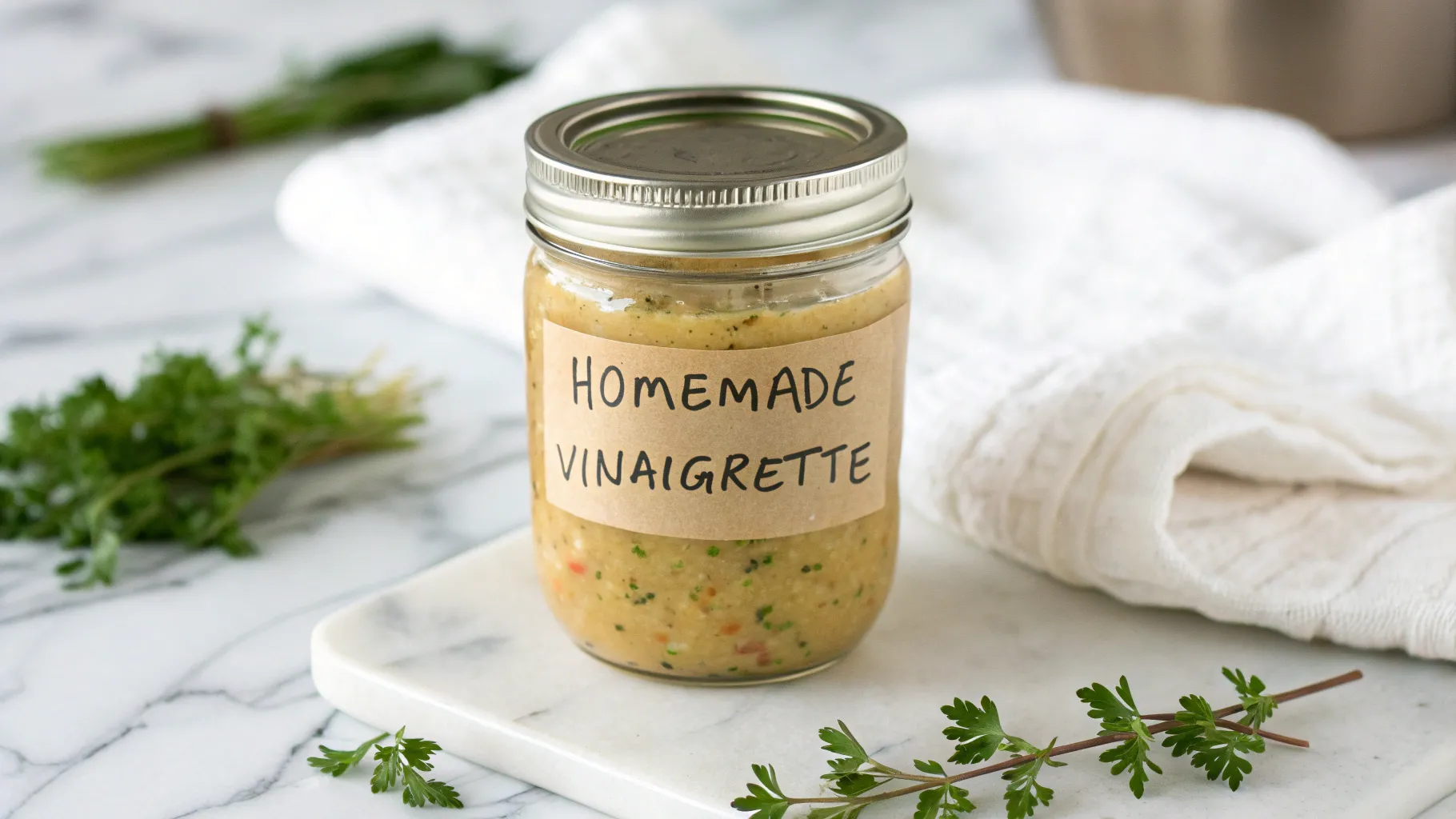
Health Benefits of Making Your Own Basic Vinaigrette
Without a doubt, homemade vinaigrettes offer a treasure trove of benefits:
- Fewer calories compared to creamy dressings.
- No artificial preservatives or fillers.
- Customizable ingredients tailored to your dietary needs.
Choosing to prepare your own dressing lets you prioritize health without sacrificing flavor!
Flavor Variations on the Basic Vinaigrette
Ready to take your basic vinaigrette skills to the next level? Here are some fun variations:
- Herb Vinaigrette: Add fresh basil, parsley, or cilantro.
- Citrus Vinaigrette: Swap vinegar for orange or lime juice.
- Spicy Vinaigrette: Mix in chili flakes or a dab of hot sauce.
- Sweet Vinaigrette: Blend in maple syrup or honey for a touch of sweetness.
Experimenting with flavors keeps things exciting and delicious!
Best Salads to Pair with Basic Vinaigrette
One of the reasons basic vinaigrette is beloved is its incredible versatility. It pairs beautifully with:
- Mixed greens like arugula and romaine.
- Grain salads with quinoa or farro.
- Vegetable salads featuring tomatoes, cucumbers, and avocado.
Seasonal and regional ingredients offer endless pairing options, so follow your cravings!
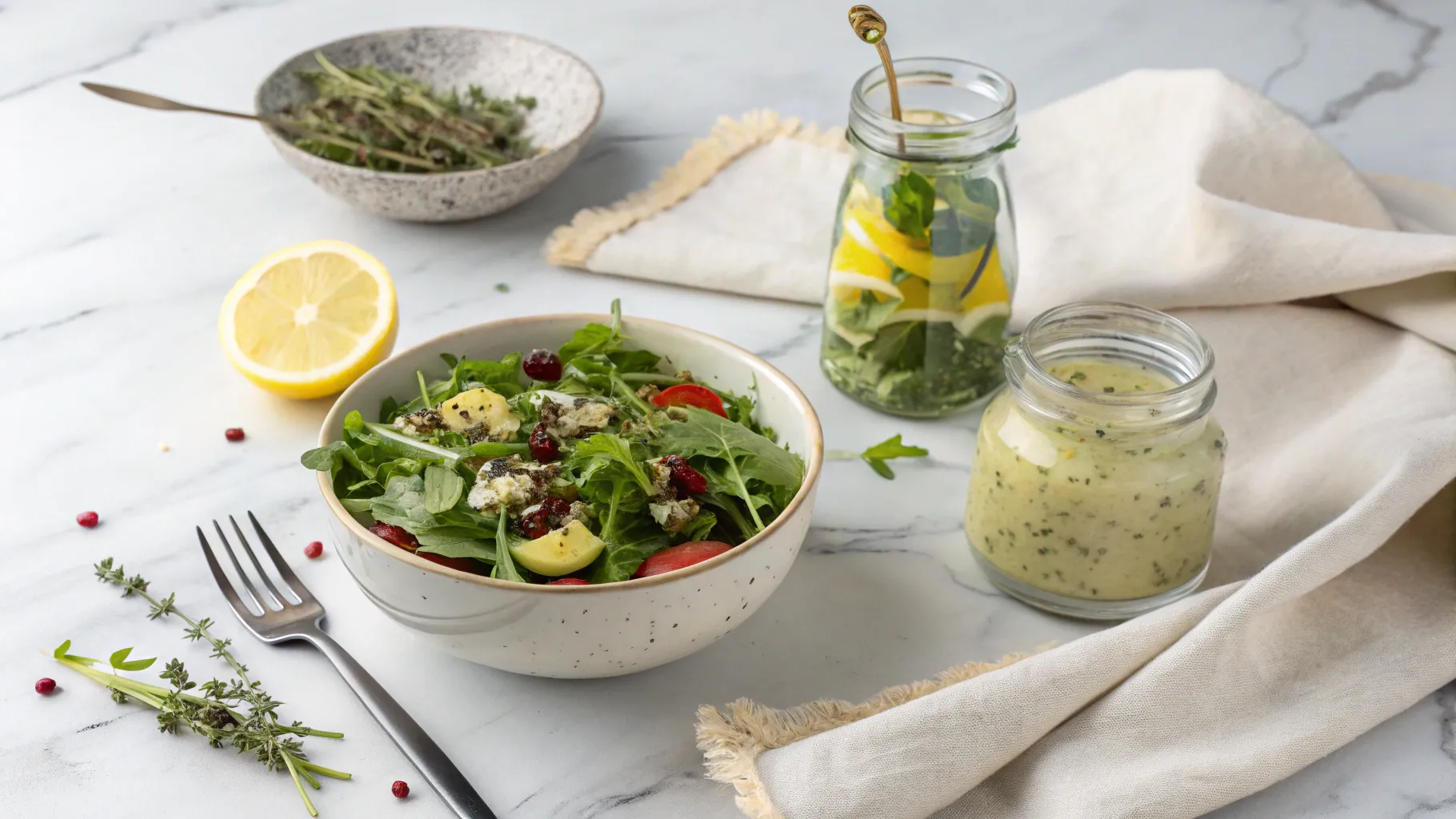
Beyond Salads: Other Uses for Basic Vinaigrette
Believe it or not, basic vinaigrette isn’t just for leafy greens! You can also use it to:
- Marinate chicken, tofu, or vegetables.
- Drizzle over grilled fish or roasted vegetables.
- Toss into a grain bowl or wrap for an extra zing.
The possibilities are truly limitless once you have this foundational dressing ready.
Customizing Your Basic Vinaigrette for Special Diets
No matter what diet you follow, it’s easy to customize a basic vinaigrette with just a few simple swaps:
- Vegan: Use plant-based sweeteners like agave instead of honey.
- Gluten-Free: Make sure your mustard and vinegar are certified gluten-free.
- Low-Sodium: Control salt levels by starting with a small amount and seasoning to taste.
Once you’ve tailored your vinaigrette, try pairing it with fresh, vibrant dishes, for example, a lemon-herb vinaigrette is the perfect complement to our Grilled Chicken Avocado Salad for a light, balanced meal.
FAQs About Basic Vinaigrette
Q1: What is the best oil to use for vinaigrette?
Extra-virgin olive oil is the most popular, but avocado oil is excellent too.
Q2: Can I make vinaigrette without mustard?
Yes! You can use a spoonful of honey or mayonnaise as a natural emulsifier instead.
Q3: How long does homemade vinaigrette last?
Typically, it stays fresh for about one week if refrigerated properly.
Q4: Why does my vinaigrette separate, and how can I fix it?
Separation is normal. Just shake the jar or whisk the vinaigrette before serving.
Q5: Is vinaigrette healthier than creamy dressings?
Absolutely! Basic vinaigrette is lower in calories and saturated fats compared to ranch or blue cheese dressing.
Q6: Can I use fruit juices instead of vinegar?
Definitely! Lemon juice, orange juice, and lime juice work beautifully.
Q7: How can I thicken my vinaigrette naturally?
Adding a touch of mustard or honey will help achieve a creamier texture.
Q8: What are some quick vinaigrette recipes for beginners?
Stick to the 3:1 oil-to-acid ratio, and keep it simple with olive oil, lemon juice, mustard, salt, and pepper.
Final Thoughts on Mastering Basic Vinaigrette
In conclusion, mastering a basic vinaigrette is one of the simplest and most rewarding skills any home cook can develop. Not only does it allow you to whip up healthier, fresher meals in minutes, but it also gives you the creative freedom to customize flavors to your heart’s content. Whether you stick to a classic lemon vinaigrette or explore bold variations like herb or citrus blends, a homemade basic vinaigrette will instantly elevate your dishes. So next time you’re tempted to grab a bottle off the grocery store shelf, remember that a better, tastier, and healthier option is just a few whisk strokes away!
Print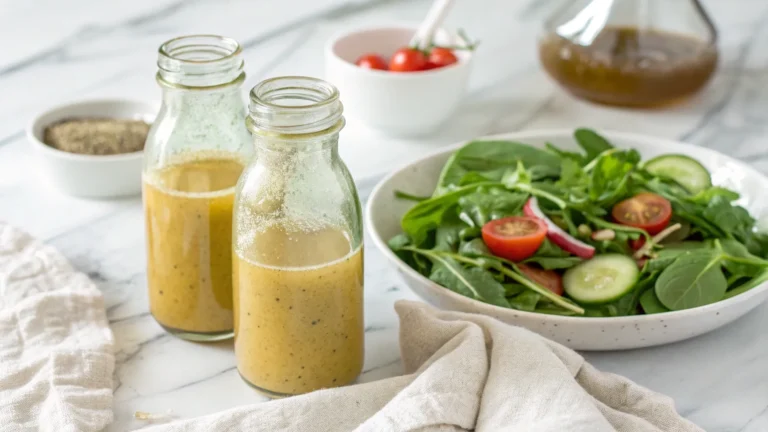
How to Make a Basic Vinaigrette: Easy Guide to the Perfect Homemade Dressing
This basic vinaigrette recipe is quick, easy, and endlessly versatile. Perfect for fresh salads, marinades, or grain bowls, made with simple, healthy ingredients!
- Total Time: 5 minutes
- Yield: About 1/2 cup (enough for 4 servings) 1x
Ingredients
- 3 tablespoons extra-virgin olive oil
- 1 tablespoon apple cider vinegar (or lemon juice)
- 1 teaspoon Dijon mustard
- 1 teaspoon maple syrup or agave nectar
- 1 clove garlic, minced (optional)
- Pinch of sea salt
- Pinch of black pepper
Instructions
- In a small bowl, combine the vinegar (or lemon juice), Dijon mustard, maple syrup, salt, pepper, and garlic.
- Slowly whisk in the olive oil until the mixture emulsifies and becomes smooth.
- Taste and adjust seasonings if needed.
- Store in a sealed jar in the fridge. Shake before each use!
- Prep Time: 5 minutes
- Cook Time: 0 minutes
- Category: Salads & Sauces
- Method: Whisking
- Cuisine: French, Mediterranean

